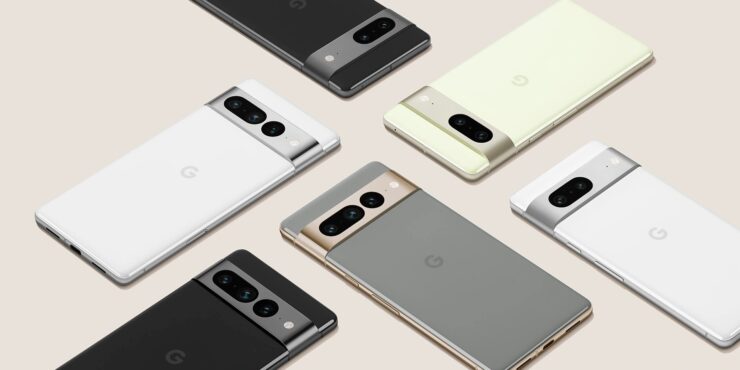Are you looking to lock the bootloader of your Google Pixel 7 smartphone? Unlocking the bootloader allows you to install custom ROMs and kernels, but it also comes with some drawbacks. Locking the bootloader can be beneficial if you want to ensure the security of your device or if you plan to sell or give it away. In this comprehensive guide, we will walk you through the process of locking the bootloader of your Google Pixel 7, step by step.
Why Lock the Bootloader?
Before we dive into the process, let’s quickly discuss why you might want to lock the bootloader of your Google Pixel 7. While unlocking the bootloader provides flexibility and customization options, it can also make your device less secure and may interfere with certain features like SafetyNet checks. Locking the bootloader restores your device to its original state, ensuring that only signed firmware can be installed. This can be useful if you want to maintain the security of your device or if you plan to sell it or pass it on to someone else.
Important Considerations
Before you proceed with locking the bootloader, there are a few important considerations to keep in mind:
- Backup Your Data: Locking the bootloader will result in a factory data reset, so it’s crucial to back up any important data before you begin the process. This will ensure that you don’t lose any valuable information.
- Stock Firmware Requirement: To lock the bootloader, you need to be running 100% stock firmware on your Google Pixel 7. If you have a custom ROM or kernel installed, you will first need to flash the stock firmware images through fastboot mode.
Now that you’re aware of the important prerequisites, let’s proceed with the step-by-step guide to lock the bootloader of your Google Pixel 7.
Step 1: Enable Developer Options and USB Debugging
The first step is to enable Developer Options and USB debugging on your Google Pixel 7. Here’s how you can do it:
- Go to the Settings app on your device.
- Scroll down and tap on About phone.
- Locate the Build number and tap on it seven times to enable Developer Options.
- Go back to the main Settings menu and tap on Developer Options.
- Toggle the Developer Options switch to On.
- Scroll down and enable USB debugging.
Step 2: Install ADB and Fastboot Tools
In order to lock the bootloader, you’ll need to have ADB and Fastboot tools installed on your computer. These tools allow you to communicate with your device via the command line. Here’s how you can install them:
- Download the ADB and Fastboot tools package for your operating system from the official Android Developers website.
- Extract the downloaded ZIP file to a location on your computer.
- Open the extracted folder and find the adb and fastboot executables.
- Add the folder containing these executables to your system’s PATH variable. This will allow you to run ADB and Fastboot commands from any location in the command prompt or terminal.
Step 3: Boot into Fastboot Mode
To lock the bootloader of your Google Pixel 7, you need to boot it into fastboot mode. Follow these steps to enter fastboot mode:
- Power off your Google Pixel 7.
- Press and hold the Power button and the Volume Down button simultaneously.
- Release the buttons when the bootloader screen appears.
- Connect your device to your computer using a USB cable.
Step 4: Verify Fastboot Connection
Once your Google Pixel 7 is in fastboot mode and connected to your computer, you need to verify that the fastboot tools can communicate with your device. Open a command prompt or terminal window and type the following command:
fastboot devices
If the command returns a string of letters and numbers along with the word “fastboot,” it means that the connection is successful. If you don’t see this message, make sure that you have properly installed the ADB and Fastboot tools and that your device is connected correctly.
Step 5: Lock the Bootloader
With the fastboot connection established, you’re now ready to lock the bootloader of your Google Pixel 7. Here’s how you can do it:
- In the command prompt or terminal window, type the following command:
fastboot flashing lock
- Press the Enter key to execute the command.
- On your Google Pixel 7, a prompt will appear asking if you want to lock the bootloader. Use the Volume Up and Volume Down buttons to navigate through the options.
- Highlight the Lock the Bootloader option.
- Press the Power button to select the option.
- Your device will perform a factory data reset, erasing all data on the device. This is a standard security measure to ensure that only signed firmware can be installed.
- Once the bootloader is locked, your device will reboot into the Fastboot mode again.
- In Fastboot mode, the Start option will be highlighted. Press the Power button to select it.
- Your device will boot back into Android. The first boot may take a little longer than usual as it sets up the system.
Congratulations! You have successfully locked the bootloader of your Google Pixel 7. Your device is now restored to its original state with locked firmware.
Conclusion
Locking the bootloader of your Google Pixel 7 can be a necessary step to ensure the security of your device or if you plan to sell or pass it on to someone else. By following this step-by-step guide, you can easily lock the bootloader and restore your device to its original state. Remember to back up your data before proceeding, and make sure you are running stock firmware on your device. If you have any difficulties or questions, refer to our “How To” page for further assistance.
Now you can enjoy the security and stability of your Google Pixel 7 with a locked bootloader. Happy exploring!
Additional Information
- It is important to note that locking the bootloader will result in a factory data reset, so make sure to back up any important data before proceeding.
- If you are experiencing difficulties with your device, check out our “How To” page for solutions to common issues.
- Stay tuned for more helpful articles and tutorials on Android, Google Pixel, and other tech-related topics.
Experiencing difficulties with your Device, check out our “How To” page on how to resolve some of these issues.





